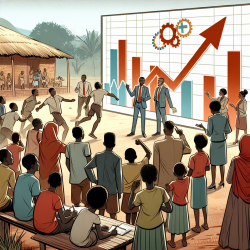As practitioners in the field of education and therapy, it's crucial to stay informed about the latest research and methodologies that can impact our work. One such area is understanding the cumulative environmental risks that affect children's neurodevelopment. The research article "Defining and Intervening on Cumulative Environmental Neurodevelopmental Risks: Introducing a Complex Systems Approach" offers valuable insights into this complex topic.
The Importance of a Complex Systems Approach
The article highlights how traditional approaches to assessing environmental health risks often fall short. They tend to evaluate chemical exposures in isolation, ignoring the dynamic interplay of multiple factors that contribute to health outcomes. A complex systems approach, specifically system dynamics, provides a more holistic framework for understanding these interactions.
Key Takeaways for Practitioners
- Diverse Factors: Recognize that children's neurodevelopment is influenced by a range of chemical and nonchemical stressors. These include prenatal exposures, social stressors like poverty, and environmental pollutants.
- Cumulative Impact: Understand that these factors do not act independently. Their cumulative impact can significantly affect cognitive abilities and educational trajectories.
- System Dynamics Modeling: Utilize system dynamics modeling as a tool to visualize and simulate the interactions between these diverse factors. This can aid in developing more effective policy responses and interventions.
The article provides a proof-of-concept model demonstrating how system dynamics can be applied to understand disparities in children's exposure to neurodevelopmental stressors. This model can serve as a valuable resource for practitioners seeking to enhance their understanding and improve their practice.
Encouraging Further Research
The insights gained from this research are just the beginning. As practitioners, we should be encouraged to delve deeper into the complexities of environmental health risks. By doing so, we can better advocate for policies that protect vulnerable populations and improve educational outcomes for children.
If you're interested in exploring this topic further, I highly recommend reading the original research paper. It's an excellent resource for anyone looking to expand their knowledge in this area.










